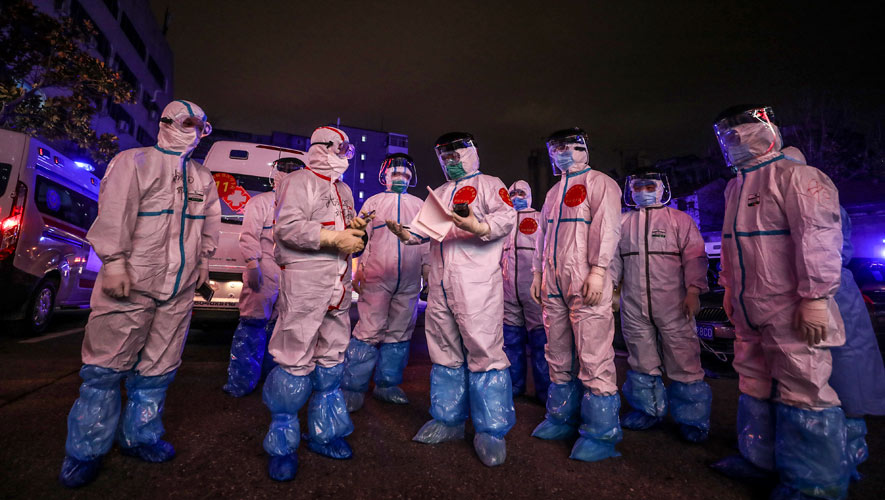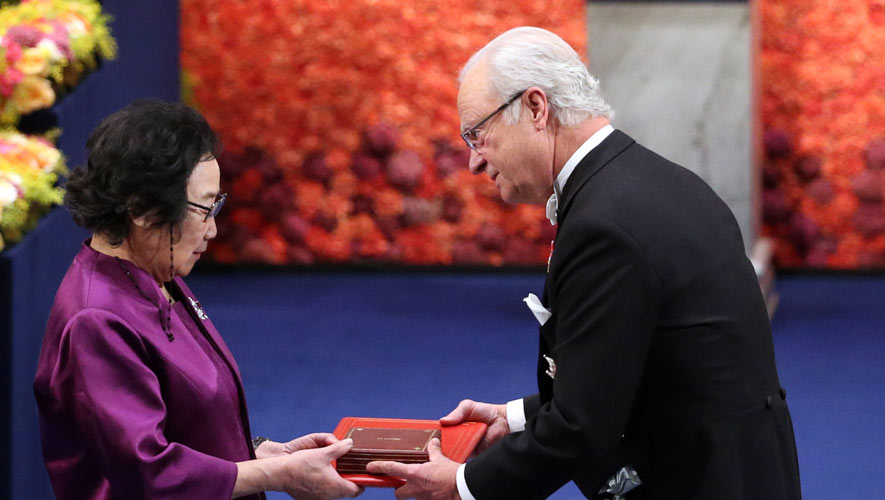All levels of authorities, ranging from the central government to civilians, are already offering a multitude of reflections and summaries concerning the COVID-19 epidemic despite China remaining at a critical point in its battle against the virus outbreak.
For the latest Cambodian Business news, visit Khmer Times Business
At the February 23 conference, called “Coordinating the Prevention and Control of Novel Coronavirus Pneumonia and Economic-Social Development”, Chinese President Xi Jinping expressed that the epidemic has clearly highlighted the gaps within China’s prevention and control systems as well as the country’s public health emergency management. Among some of the major issues discussed, he stressed the need for the country to learn and reflect from the ensuing experience, find ways to strengthen the public health laws further, revamp prevention and control systems concerning diseases and pandemics, establish medical insurance and medical assistance systems for major diseases, as well as come up with a standardized emergency material reserve, to name a few.
The President further added the importance of adopting a preventative approach towards sanitation and making healthcare work the utmost priority, urging that there is a need for the combined efforts of medical treatment and prevention to stop the epidemic from spiralling out of control. Meanwhile, at a press conference held by the municipal government of Guangzhou on February 27, Chinese epidemiologist/pulmonologist Zhong Nanshan also expressed the same point of view: that the epidemic had inadvertently exposed the flaws in the country’s prevention and control systems.
In the academician’s statement, he went on to disclose that the outbreak was identified as a new coronavirus on December 31 2019, with isolation of the virus strain having been implemented on January 3 2020 followed by a reporting of the incident to the United Nations and Center for Disease Control and Prevention (CDC) on January 7. He shared, “We announced findings of human-to-human transmission pertaining to the virus to the media on January 20, although the CDC had knowledge about it way back. Due to the lack of authority however, we did not disclose our findings. Instead, our only orders were to report the discovery to the higher ups and await the local government’s decision. As such, we weren’t able to respond any further following that.”
“Personally, I find our CDC status far too inferior. For a technical department that is led by the Health and Medical Commission, we receive little attention and are therefore subjected to the standard operating procedures when it comes to reporting public health emergencies. In some other countries, CDCs are often considered some of the highest in ranking when it comes to power and are even provided with the authority to disclose information directly to the public should an epidemic happen. The CDC must be given additional executive power and have its status lifted. Otherwise, history is bound to repeat itself again,” he added.

Compared to the American CDC, the Chinese CDC is certainly less powerful in status and it lacks the necessary manpower, technology and authority to get things done. Meanwhile, the American counterpart possesses a headcount of 14,000 full-time employees and 10,000 contracted staff on its payroll, with an annual budget of US
$12 billion to boot. On top of that, the American CDC is given large administrative authority and holds a high ranking, both of which enable the country to uphold adequate preventive and control efforts. In times of a public health emergency, the American CDC is capable of making major decisions such as ordering the lockdown of highly populated areas i.e. airports and restaurants or advising the public on the next moves. In fact, they are even given clearance to report any major health emergencies directly to the President themselves, all of which increases the country’s efficiency at handling any health crisis. As a whole, the American CDC not only serves as a key institution for decision-making and technical guidance, it also holds a key role in aiding state and local health agencies to improve their technology and capabilities; of which the latter would then enable local health agencies to detect any potential health threats more effectively and prevent them from escalating any further.
With the public health management’s reformation becoming one of China’s top priorities in its post-epidemic reformation and restructuring attempts, it is unlikely that the Chinese CDC would be “spared” from the spotlight either. Then again, assuming that it is indeed in for a reformation, it is also important to realise that the reform can’t, and won’t, happen overnight. Instead, a more realistic approach to the matter would be to integrate China’s existing disease prevention teams and resources with the CDC to form a more cohesive CDC system for the nation, while streamlining its functions and power.
Truth be told, China has no qualms about providing the CDC with additional funding, manpower and authority, yet the bigger question that remains unanswered is what and how the departments involved intend to redefine the CDC’s role post-reformation, should an upgrade and an expansion in power happen. Without answering this question, the act of reforming China’s CDC would be nothing more but a pointless show that involves a hefty amount of money and delegation in power at best, and one that lacks aim or purpose. The way Anbound sees it, China’s CDC would require a massive overhaul in its status, capabilities, services and manpower – to name a few – in order to set it apart from its former self. In this case, the biggest change to come out of the reformation would be China’s CDC transition from being a professional and technical consultation-centric body to a public policy service-driven organisation that places great importance on transparency in regards to communication, as well as being adept at coordinating any form of responses to public health emergencies. Apart from the large number of epidemiologists, virologists, doctors and academicians present in the organisation, China’s CDC should also facilitate the inclusion of numerous public policy experts within its ranks. With all that in mind, if the transmission of a disease ever progresses to the point where it becomes a public health concern, the CDC’s response and management model can move beyond a technical level and transform into a complex and multifaceted one that involves making public health decisions, coordinating policies and implementing them accordingly.
A point worth stressing is that transparency in communication should be made a part of the CDC system’s “gene” or core value, as well as its inherent requirement. As mentioned by one of the country’s epidemiology experts, the field of epidemiology serves as the backbone to any preventive and control efforts for diseases, and tasks involving disease surveillance, outbreak reporting, epidemiologic field investigation and public health decisions are of the most basic procedures. In a way, one can almost liken the field to a form of “intelligence gathering”, though it goes without saying that there is way more than that to the whole CDC. Research, early warnings, decision-making and implementations of any kind relating to public health must be based on timely and accurate information and the action plans must also be formulated in accordance to this information. Judging by China’s response towards the epidemic on a domestic level, particularly in its early stages, it was apparent that the communication between public health sectors and the government was poorly maintained, which translated to the country’s failure to make a timely and effective decision to deal with the epidemic. The government missed their golden opportunity to contain the initial outbreak during the early stages and subsequently caused the virus to snowball into an epidemic.

In the near future, China’s CDC would have to undergo a major restructuring in its roles and power. Public policies-wise, the following needs to be accomplished – one, do away with the old-school protocols and work on strengthening early warning systems for public health crises and give the Chinese CDC the authority to issue warnings in their own right. Two, let the CDC make high-level decisions, grant them the necessary clearance to advise the central government and State Council on any policy-related matters and provide the central government with timely and consistent updates regarding any public health issues. Three, implement technical guidance and coordinate work across all local CDCs laterally, ensuring that they’re more than capable of supervising and directing public health agencies efficiently in the event of public health emergencies. Four, actively strengthen China’s study on global public health crisis and study each country’s public health emergency response plan during the country’s downtimes. Five, monitor the country’s public health medical supplies system on a technical level, urge all levels of health department and local government to up their A-game and keep close watch on their progress. Six, organise public health emergency drills – overseen by experts to give professional input – throughout various regions and cities. In China, Xi Jinping had pointed out numerous times that the fight against the COVID-19 epidemic is a means of testing the country’s governance capabilities and capacity, though the million-dollar question lies in how exactly the epidemic can help elevate the country’s governance capabilities. Anbound believes that the answer to that lies in the country’s professional capabilities – better professional research, decision-making and execution in any plans as well as stronger professional governance. After all, better governance capabilities and capacity stems from better professional capabilities.
To conclude, with the Chinese CDC being the focal point of China’s reformation, the country is expected to perform a massive overhaul in its disease prevention and control efforts as well as its public health systems in the wake of the epidemic. That said, before the expansion in power and status can happen, the CDC must first learn to redefine its role moving forward, so as to ensure that it becomes a much more efficient and effective key public policy organisation that has the citizens’ best interests at heart; one that prioritises their health and safety.
Mr. He Jun takes the roles as Partner, Director of China Macro-Economic Research Team and Senior Researcher. His research field covers China’s macro-economy, energy industry and public policy.




